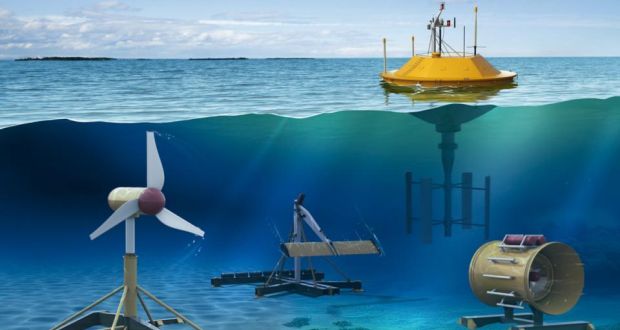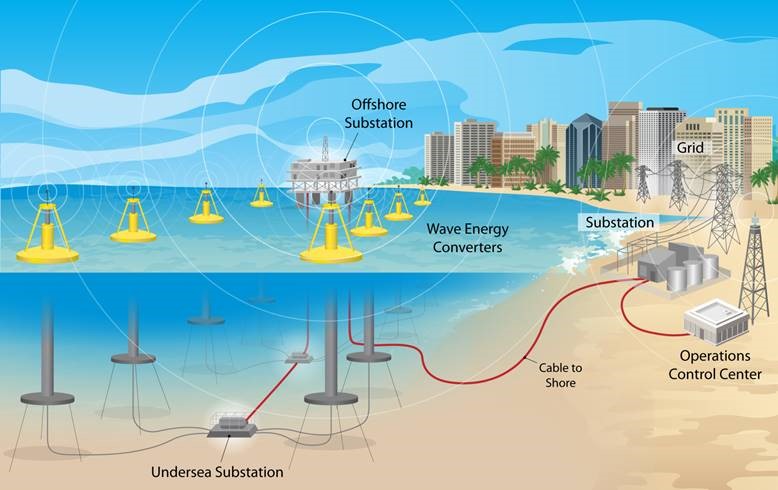
Hydrokinetic Energy
Hydrokinetic energy uses the kinetic power of tides, currents, and waves, to create electricity. The development of technologies used in harnessing the energy of waves and sea currents is still in research and development, with a few demonstration projects as described below.
There are plenty of larger, operational hydrokinetic systems, using tidal energy, in place worldwide. Two such technologies are tidal barrages and tidal stream generators. Tidal barrages and tidal stream generators work in lakes, rivers, lagoons, estuaries – so for both freshwater and salt/freshwater mixed environments. These systems are in large-scale use worldwide today and harness the energy of tides and currents.
Hydrokinetic technologies have come to the forefront of renewable energy research and development in recent years. The power of tides, currents, and waves represent underdeveloped potential sources of energy. Water is far denser than air, and seawater is roughly 800 times denser than air; this fact alone makes the potential power of hydrokinetic energy an opportunity that can’t be ignored.
For more on freshwater tidal energy systems, as well as hydroelectric dams, please see Green City Times’ article on:
Renewable Energy: Hydroelectricity
Wave energy technology remains under development with a few relatively small wave energy farm demonstration projects off the coasts of Hawaii, Scotland, France, Spain, and Portugal. Generating wave power is most commonly done in these projects with specialized buoys that harness the energy of waves. These technologically sophisticated hydrokinetic buoys drive internal turbines with sea wave energy, creating electricity (similar to how a hydroelectric dam works); and then send the power to an offshore substation and/ or an undersea substation (which then sends the energy back to a power substation on land), as seen in this diagram:

For more on the future of wave farms, please see:
Could wave power be the next boom in renewable energy? from Fast Company
For more information on hydrokinetic systems, please also see:
Hydroelectricity
GCT tags
carbon footprint circular economy clean energy climate change compost composting eco-conscious eco-friendly eco-friendly materials electric vehicles energy-efficient appliances energy efficiency energy star energy storage environmental footprint environmental impact environmentally-friendly ESG global warming green building greenhouse gas emissions green infrastructure green spaces LED lighting LEED organic farming Paris Climate Accord recycling renewable energy smart thermostat solar solar energy solar panels solar power sustainability sustainable sustainable agriculture sustainable construction sustainable living sustainable materials sustainable practices sustainable transportation urban planning waste management water conservation